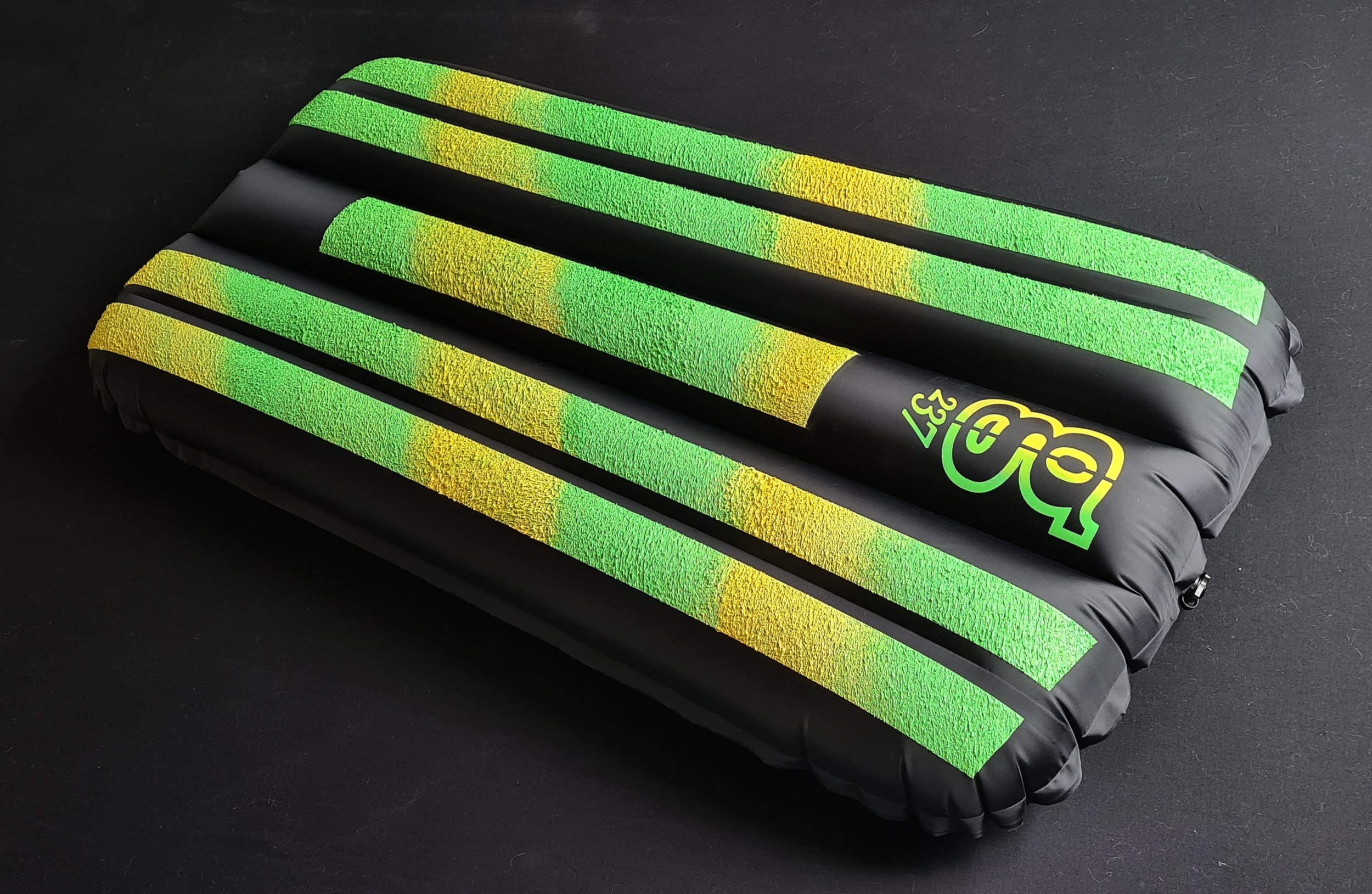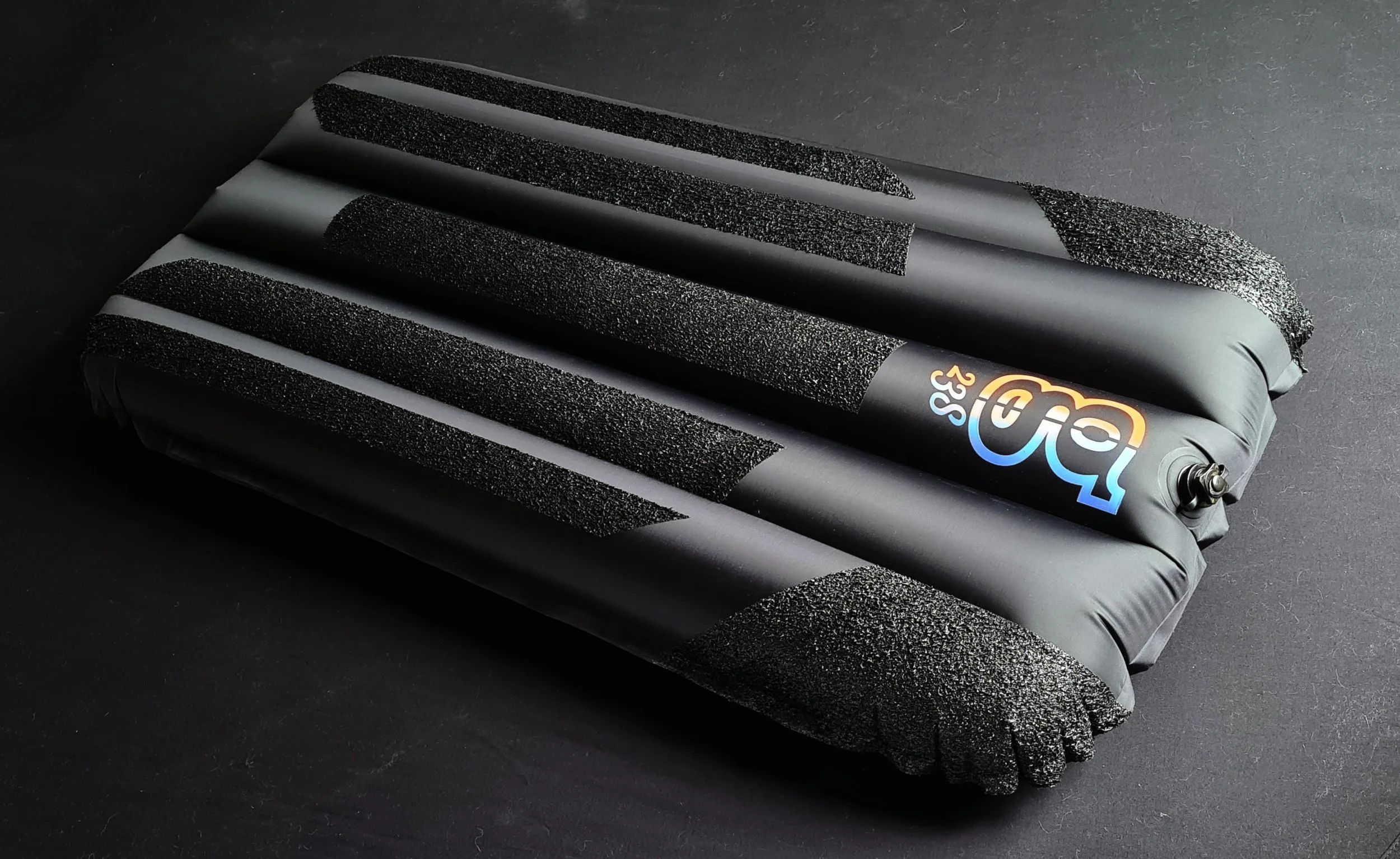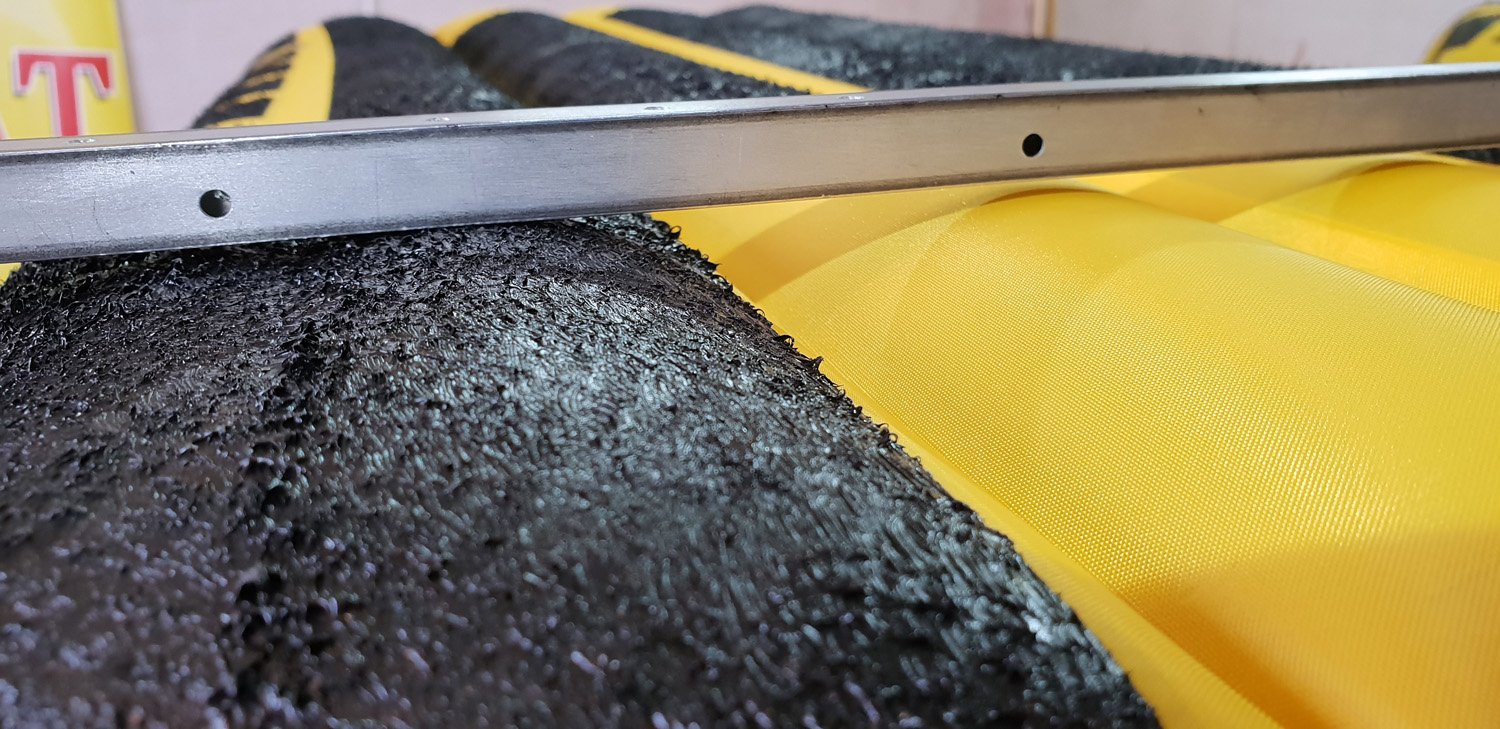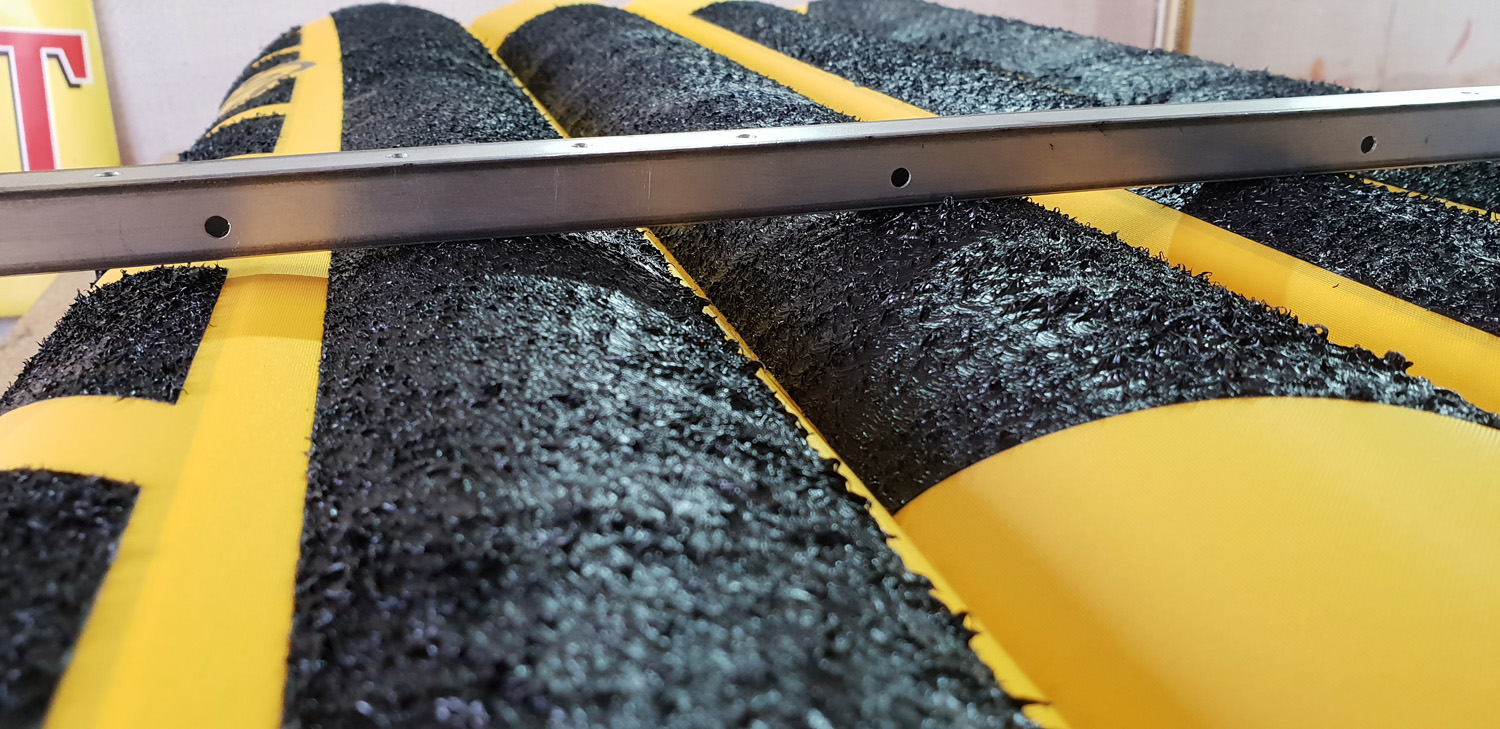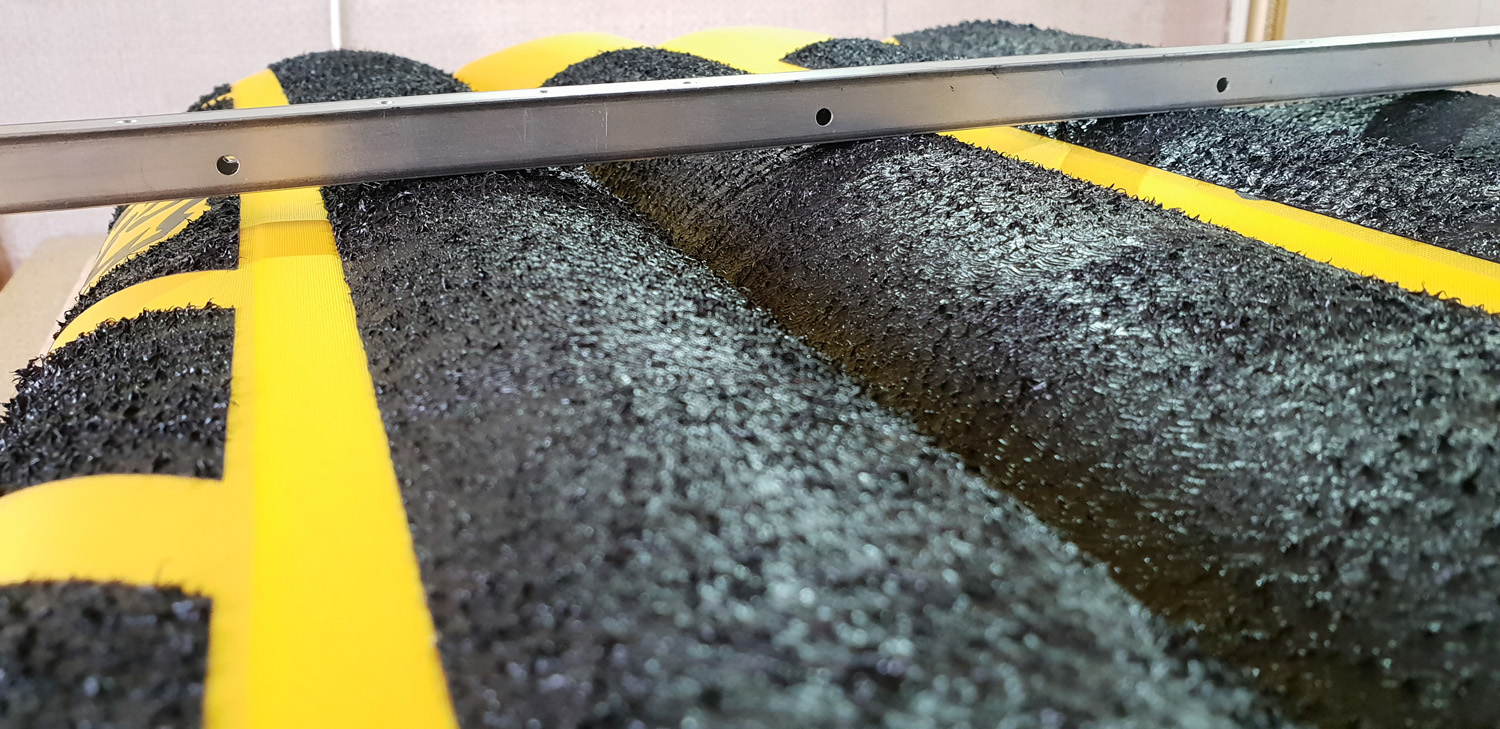Pinliner - Trying New Things
/TRAVELLING BACK IN TIME!!!
No... Not really but the eagle eyed among you might notice that the numbering on this mat is out of sync. The reason for this is that I number mats as I design them and this one was designed a while back and then other things took priority.
So what's the deal here? Well this mat is a bit of a prototype. It's a 70/70 RB-JMC super-free-breather with neg rocker, but with a much squarer tail. The RB-JMC design has a squarer tail then nose anyway, but this mat has that taken to an extreme. The squarer tail of the RB-JMC releases more readily giving less drag, thus more speed. This also encourages the tail to drop slightly allowing the mat to sit in its naturally faster position on the high line. This mat is taking that concept to its extreme to test its limits.
I have actually already built one for Andrew Stephen Buck and he has surfed it once. The feedback is that it might be too much with the hard corner possibly inviting cavitation but as Andrew said himself, one surf isn't enough. Also I really believe that as a builder it is important to test designs myself to get live feedback.I have left space between the end of the grip and the corners on both Buck's mat and mine to re-shape the tail if this really doesn't work.
The other part of this experiment is the aesthetic. I have had an idea about using sealant pinlines and stenciled designs to create a barrier for acid dye. Hard edges are pretty much impossible with acid dye on nylon. When I got an order for an intricate design (that one's on the way) it was obvious that it was time to try it out. Not really "pin" lines on this mat but I had the idea for a name in mind as tribute to the legend of Moonlight Glassing, Peter St Pierre who's internet handle was "Pinliner". My efforts are not a patch on anything Pete does so maybe more of an insult. Sorry mate!
Anyway, Pinliner is going to be my new mat. Whether this new iteration is what I stick with or I just reweld the tail back to what already ain't broke will have to be seen.
Cheers
G





